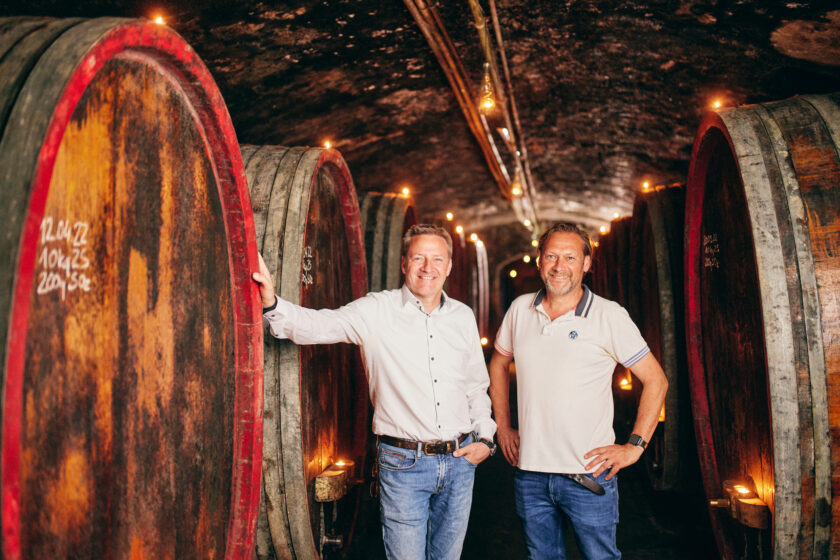Spreitzer
Weingut Josef Spreitzer (30ha)
Oestrich-Winkel / Rheingau / Germany
The Spreitzer estate, founded in 1641 and one of the oldest in the Rheingau, benefits from a long tradition in winemaking as well as the recent modern winemaking innovations of sons Andreas and Bernd Spreitzer who have controlled the estate since 1997. Bernd and Andreas were the Gault Millau’s Discovery of the Year Award recipients in 2001.
All of the classified Erste Gewächs parcels that Spreitzer owns lie within the original boundaries of the named vineyard; the 1971 consolidation grouped vineyards smaller than 5 hectares together. The Lenchen vineyard in Oestrich is composed mostly of loam and loess soils. Numerous underground streams here ensure that even in dry seasons the vines are guaranteed a natural source of water. Within the Lenchen rests the two smaller parcels, Rosengarten and Eisenberg. Rosengarten, the ‘filet piece’ of the Lenchen, is a tiny parcel on lower elevation between the Rhein River and the Spreitzer’s home, and typically expresses characteristics of full fruit. Eisenberg sits in the most northeastern corner of Lenchen and maintains very old vines planted amongst red, iron-rich stones. Eisenberg was categorized by the Prussians in the 1860s as being amongst the highest in quality, and due to its exposition and rich loess-loam soils, it produces fruit of sufficient ripeness. The Oestricher Doosberg vineyard is also composed mostly loam and loess soils, with the addition of quartzite, and sits at an elevation of 600 meters. Other vineyards include the Winkeler Jesuitgarten, an early ripening site alongside the Rhein with a south to southwest exposure, and Hattenheimer Wisselbrunnen, an Erste Gewächs site located due west of Oestrich.
Viticulture practices are as natural as possible at Spreitzer and include alternating cover crops of herbs, greens, and lentils in the summer with grains in the winter. The Spreitzers strive to maintain fruit and finesse by cleaning the must by gravity for 24 hours after whole-cluster pressing, then allowing the wines to rest on their gross lees and only filtering once. The Spreitzers employ a long fermentation, and extended lees aging to protect the juice from oxidation. Mostly ambient yeasts are employed for fermentation in both temperature controlled stainless steel and 1200 liter casks of German wood, called stückfass. The resulting wines show great pedigree. The Spreitzer’s flagship Riesling, <<303>>, is so named due to a record breaking ripeness of 303 degrees oechsle achieved in 1920 within the Eiserberg vineyard – a record that stood until the 2003 heat wave that swept over Europe. The 303 today still comes from the Eisenberg, but rarely hits must weights above Spätlese level.
- Vineyard Area: 30 hectares
- Annual Production: 170,000 bottles
- Founded In: 1641
- Top Sites:
- Oestricher Lenchen: Grand Cru, deep löss, veins of sand and marl
- Winkeler Jesuitengarten: Grand Cru, calcerous löss, loam, clay, sand, gravel
- Oestricher Rosengarten: Grand Cru, calcerous loam and shell limestone
- Hallgartener Hendelberg: 1er Cru, multi-colored slate and quartzite
- Grape Varieties: 95% Riesling, 5% Pinot Noir




